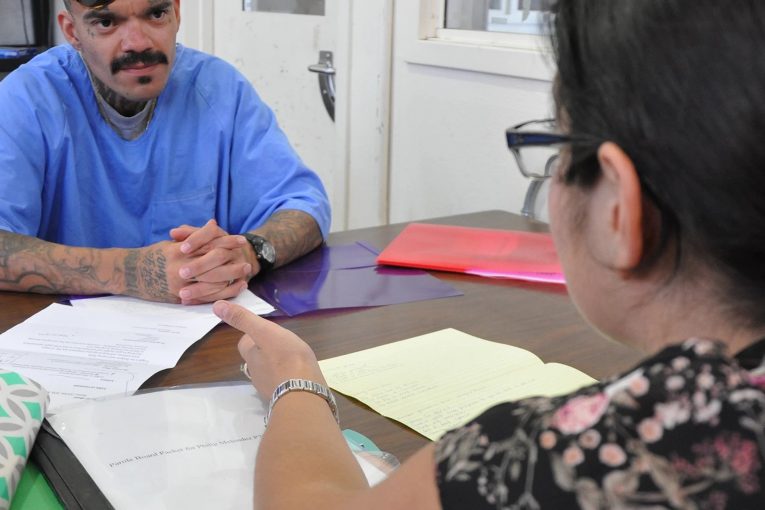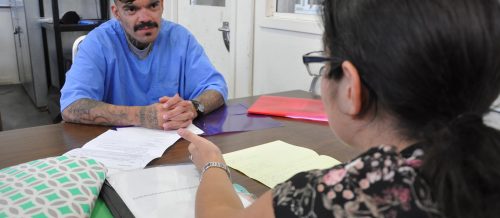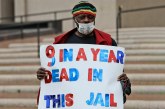

By Beiqi Wang
SAN FRANCISCO— When incarcerated people in California are released from San Quentin State Prison on parole, they are dropped off at a bus station with 200 bucks of gate money. Quite literally, they are dumped back into a world that they were isolated from for many months, or even years.
According to a population report made by California Department of Corrections and Rehabilitation, as of Oct. 6, 30% of people out of the total CDCR population are on parole. Each week, around 50 people will be released on parole in the state of California. Many of these people lack the resources or emotional support needed to reintegrate with society.
To support people on parole with the daunting task of reentering society, Allyson West founded the California Reentry Program in 2003. This non-profit organization provides individual case management and post-release assistance to help reintegrate people on parole back into their communities.
Judith Tata, the executive director of California Reentry Program, said that “It doesn’t matter how long you have been incarcerated, the closer people get to their release date, the higher their anxiety.”

The issue of reintegration is worse for those on parole who suffer from mental illness or addiction. To throw those who are dealing with mental illness into the outside world without preparing them, “the temptation, the possibility to relapse is pretty significant.” Tata says.
This is where the California Reentry Program comes in. Prior to parole, the California Reentry Program offers individual drop-in assistance, long-term case management, and various workshops provided by expert speakers. During drop-in assistance, volunteers address specific issues with clients such as information about available resources on-site. If needed, clients also meet up with volunteer advisors on an ongoing basis for long-term plans.
The California Reentry Program tries to fill the void of individual support that is lacking in many re-entry programs offered by CDCR.
The program started out in 2003 with a single volunteer. Now, the program has more than 20 volunteers and is continuing to grow. “The need motivates all of us,” Tata said, “We have been filling a void. When there’s nobody else doing it, somebody has to.”
The COVID-19 pandemic did not stop California Reentry Program from offering its support and services to the incarcerated community. While other programs decided to shut down completely due to state-wide shut down, this program continued to offer one-on-one advising in the form of letter writing.
Each week, around 60 to 100 corresponding letters were exchanged. The program’s services became especially important with an increase in expedited releases during the COVID-19 pandemic. In fact, the program was so impactful for many people in San Quentin that they started receiving phone calls from people who were already released from prison, but who were still seeking help.
Currently, California Reentry Program has returned back to in-person volunteering. It is actively helping 380 people incarcerated in San Quentin and has 60 people on the waitlist.
The practicality of the California Reentry Program sets it apart from many other reentry programs. “Often I think people are caught off guard. What our group can do is give them some life skill tips,” Tata emphasizes, “When you get out, you’re gonna get car sick. When you get in that car, get prepared – It’s nothing abnormal. When you walk in the store, you are gonna get overwhelmed. We try to prepare them for what it may feel like: do you know what to do and how to cope.”
The program’s consistent presence at San Quentin and referrals from staff members at CDCR attracts many to sign-up for their services. “People know we’re there, and what hours we are there,” Tata explains. But she mentions there is one requirement before people can sign-up for the program: the willingness to commit to the process and put in effort.
“Would you like to be judged by the worst decision you’ve ever made?” Tata asks, “Society judges, even though people do deserve often not only a second, but a second, a third, and a fourth chance. Not only do they judge, but they keep judging these people when they put in a lot of work. It’s our duty to educate the public when we can – whatever we learn about the life inside, we try to teach people in the outside it’s not what you think, at least not at San Quentin.”
Since January 2020, California Reentry Program has helped more than 200 clients return to their homes. Admittedly, there have been cases of relapse. There also has been positive feedback from the program’s former clients, thanking the program for the work it has done.
Tata reflected that it is difficult to measure the success of the program, since what counts as successful for a person to reintegrate back into the society in any way? A smooth reintegration of the formerly incarcerated depends on the collective work of the community.





